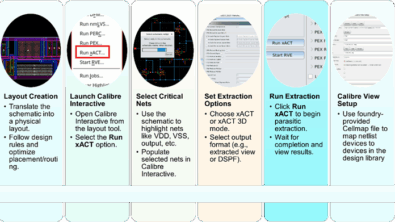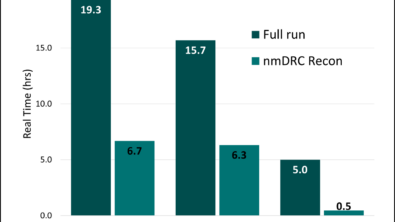Building the bridge between GDS and OASIS

By Shelly Stalnaker
Switching from GDS to OASIS format can bring a host of benefits, but only if you make the right choices before you start…
The OASIS file format has now been around for over 15 years. Because it can help design teams produce dramatically smaller file sizes that load much more quickly, its popularity as an alternative to the GDS format is growing. After all, who wants to spend more money on storage, and run the risk of delaying their tape-out schedules?
But (oh, yeah, you knew that was coming), you can’t just wake up one morning and decide “Today’s the day I’m switching to OASIS!” Transitioning to the OASIS format requires just a bit more effort than that. There are prerequisites to be satisfied before you can even consider beginning, and smart engineers probably want to be sure they aren’t causing new or unexpected problems in their process flows. You look like a smart engineer. Taking a little time to build a solid bridge between the two formats can help you cross over that much faster, with confidence in the results.
So, what are these prerequisites of which I speak? There are three, and they are all pretty much mandatory.
- Foundry support. Virtually every major foundry now supports OASIS, so this is probably only going be an issue if you work with a smaller foundry. Give them a call.
- EDA tool support. Again, nearly all commercial EDA tools can work with OASIS, so 99% of the time, it’s not a problem. Oh, you say your company uses its own internal layout tools? Might want to check with your support team.
- IP support. You use IP from 3rd-party suppliers, right? Can they provide the IP in OASIS format? If the answer is yes, proceed. If the answer is no, you’ll need to have a discussion with them about whether or not you can change the format of their IP without running into contract issues.
Now that you’ve got all that squared away, you can decide exactly how you’re going to convert your files. The most basic method of converting a GDS layout is to load it into a layout viewer like the Calibre™ DESIGNrev™ layout viewer, and then export the layout in the OASIS format, enabling the OASIS CBLOCKs and strict mode options to get the best results in terms of file size and loading time. However, if you have a lot of GDS files to convert, you better have a LOT of coffee ready, because this simple export process can quickly become tedious and time-consuming.
Fortunately, there are faster and easier options. Whew! For instance, designers using the Calibre toolsuite can use our gds2oasis utility, which automates the process of loading a layout into the Calibre DESIGNrev layout viewer and exporting it in the OASIS format. You can then use the Calibre DBdiff functionality to confirm that no data was lost or mangled during the conversion. Hint: use the DBdiff functionality. I’ve heard it prevents swearing, hair-pulling, and painful conversations with your manager.
One last thing…remember I said smart engineers would make sure they aren’t causing more problems than they solve? One good way to start is by converting a previous project to help you figure out the best process, while allowing you to familiarize yourself with the differences between the two formats. Kind of like those math textbooks from college that had all the answers in the back, so you could check your work. What, like you didn’t?
A smart engineer might also want an experienced guide the first time through. Download a copy of our technical paper, Know before you go: Migrating GDS-based flows to OASIS, to get more helpful advice and guidance on how you can ensure a solid bridge to support a successful conversion.
OASIS is a registered trademark in the USA of Thomas Grebinski and licensed for use to SEMI, San Jose, California.


